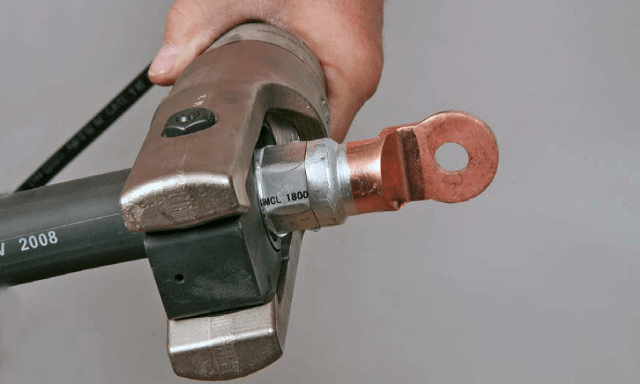Assembling aluminium cables in 5 steps
Usage of aluminium cables has some great advantages as compared to the use of copper cables. For example, aluminium is cheaper and it weighs less. Aluminium complies with the working conditions legislation. Besides the advantages of aluminium cables, the installation criteria are different as compared to copper.
Assembling aluminium cables
In this blog, we will show you how we assemble a complete aluminium cable installation. Installing and maintaining the right connections is important to allow aluminium conductors to run on low resistance. Running on low resistance leads to a decrease in temperature, even more than copper conductors.
The steps for assembling aluminium cables are different as compared to copper. Because of the connections for aluminium, they are considered more critical. Every class of conductor requires special attention.
Step 1, Stripping the cable with proper tools
We use proper stripping tools to avoid damage to the individual conductor wires during stripping. We smoothly remove the sheath and the separator tape (foil between conductor and insulation) over the entire length of the conductor.

Step 2, removing oxide
When aluminium and copper are exposed to air, it is covered by an oxide layer. The oxide layer on aluminium has a hard outer layer and fixes strongly to the aluminium. Whereas the oxide layer on copper is relatively soft and conductive. Due to high resistance, we remove the oxide layer according to our confidential regulations.
Step 3, applying an oxide breaker
After cleaning the film from the aluminium, we immediately apply a special paste. This paste is an oxide breaker and prevents the formation of an insulating aluminium oxide coating on both the conductor and cable lug surfaces and decreases the contact resistance. This is an important point of attention in the process of assembling aluminium cables.

Step 4, crimping the bimetal cable lug
First, we place the crimp barrel of the bimetal cable lug over the stripped conductor end. We ensure that all wires of the conductor are within the crimp barrel. In order to ensure optimal mechanical and electrical contact the barrel of the cable lug is physically compressed around the conductor. We crimp the bimetal connection correctly to avoid open circuit and/or arcing problems. The trick avoids under/over-crimping or regular tightening. If not, the connection can crack or the conductor wires get loose. As a result, the resistance rises and you will gain negative heat profiles.

Step 5, applying a heat shrink sleeve
When the bimetal lug has been crimped onto the conductor a heat shrink sleeve should be applied. The purpose of this sleeve is to prevent the ingress of moisture or dirt at the junction between the insulation end and the back of the cable lug. The heat shrink sleeve contains glue, which melts and creates a seal when heated.

The application of our assembled cables
The assembled cables we deliver to our customers are applied at locations where electricity is needed for a limited amount of time. The cables can be used several times and will be stored when they are not needed. They are used for events like concerts or during the construction of buildings.
A cable, such as the assembled aluminium cable in this blog, transports electricity form a power generator to a distribution station. From here distribution cables distribute the electricity to installations, tools, speakers, light facilities, etc. We can assemble these kinds of cables as well. Actually, everything is possible. Based on your demands and specifications we can assemble customized extension cables including identification and tests to ensure a reliable use. This is possible with any desired type of cable, length and connectors.

More about the advantages of aluminium cables?

Recieve our eBook and you will find more information about:
- The history of aluminium cable development.
- The price advantages of aluminium cables.
- The weight advantages of aluminium cables.
- The conductivity of aluminium cables.
- The installation and connectivity of aluminium cables.







